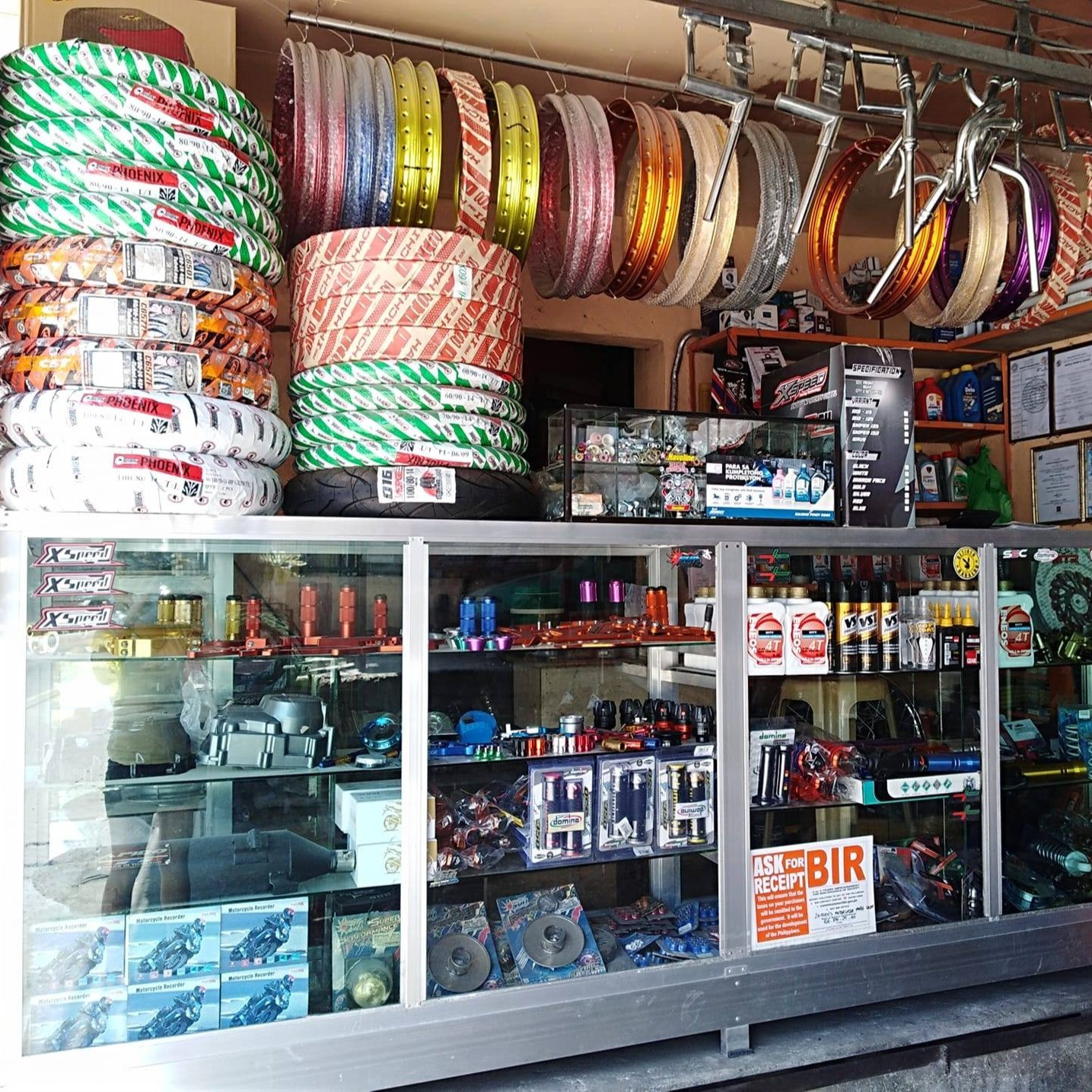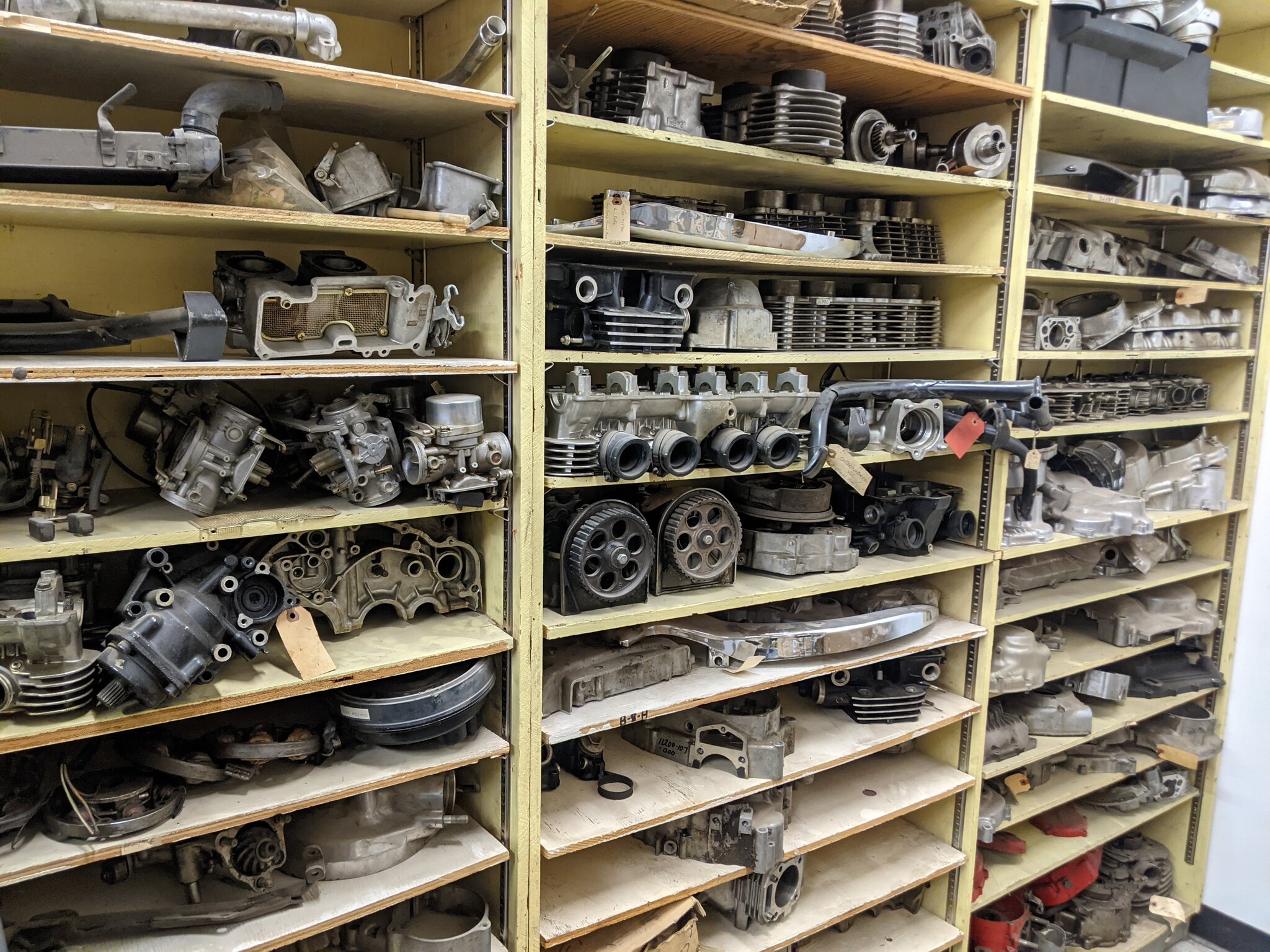Store the Best MX Parts NZ for Your High-Performance Bike
Store the Best MX Parts NZ for Your High-Performance Bike
Blog Article
Comprehending the Important Parts of a Motorcycle: A Comprehensive Guide for Fanatics
For motorbike lovers looking to boost their riding experience and guarantee their bikes run efficiently, comprehending the vital components of a motorbike is paramount. Each element, from the engine's detailed workings to the crucial function of the braking mechanisms, not only influences performance but also security and convenience.
Engine Parts

The camshaft plays a vital duty in controlling the timing of the engine's shutoffs, guaranteeing the exact opening and closing required for effective fuel and air consumption, in addition to exhaust expulsion. This timing is essential to preserving optimum engine performance and effectiveness. Additionally, the carburetor or gas injection system, depending upon the motorcycle version, is in charge of blending air with fuel in the right ratio for combustion.
The cooling system, either air or liquid-based, works to keep the engine's temperature level within functional limits, stopping getting too hot and guaranteeing durability - mx parts nz. Each element, diligently designed and incorporated, adds to the seamless procedure of the engine, specifying the bike's power result and general efficiency
Transmission System
Essential to the bike's capability, the transmission system ensures effective power transfer from the engine to the wheels. This system comprises several vital elements, consisting of the clutch, gearbox, and last drive, each playing an essential function in equating the engine's power right into activity. The clutch, usually operated by a hand bar, serves to involve and disengage the engine from the transmission, enabling smooth equipment adjustments and controlled velocity.
The transmission, commonly described as the transmission proper, consists of a collection of equipments that riders can manually change with to readjust the bike's speed and torque result. These gears are set up in a sequence that enables the motorbike to accelerate efficiently and keep optimal engine performance throughout various rates. Many bikes make use of a sequential gearbox, calling for the biker to change gears in a fixed order.
Braking Systems
While comprehending the transmission system is vital to utilizing a motorcycle's power, equally essential is the capability to control and stop that power efficiently, which is where stopping systems enter into play. Brakes are critical for safety and efficiency, giving the cyclist with the necessary control to navigate numerous surfaces and conditions. Generally, bikes include two sorts of braking systems: disc brakes and drum brakes.
Disc brakes are extra common in modern-day motorcycles due to their exceptional performance. They include a brake disc, caliper, and pads. When turned on, the caliper presses the brake pads versus the rotating disc, converting kinetic power right into warm, therefore slowing the wheel. This system provides much better warm dissipation, regular performance, and enhanced quiting power, especially in damp conditions.
Conversely, drum brakes, though much less typical, are still discovered in some motorbikes. They function by pushing brake footwear against the internal surface area of a drum connected to the wheel. While usually much less reliable in warm dissipation and quiting power, drum brakes are less complex and more affordable.
Comprehending these braking systems' nuances allows bikers to preserve their bikes correctly and appreciate the design that guarantees effective and risk-free stopping.
Suspension and Steering
Suspension and steering systems are crucial parts that substantially affect a bike's handling and trip convenience. The shock absorber, including forks at the front and shock absorbers at the rear, soaks up road abnormalities, enhancing stability and control. Front forks, usually telescopic or upside down, compress and rebound to reduce influences, while back shock absorbers keep about his tire contact with the roadway, critical for grip and safety.
Steering, focused around the handlebars, connects the biker to the motorcycle's directional control. The steering head bearings ensure smooth operation, allowing specific ability to move. Proper positioning and maintenance of these bearings are crucial for foreseeable steering action and minimizing motorcyclist tiredness.
The suspension's adjustability is one more critical element; preload, damping, and rebound settings permit personalization to fit different riding styles and problems. This flexibility is necessary for enhancing performance, whether browsing city roads or tackling sturdy trails. Developments like electronic shock absorber provide real-time adjustments, improving experience quality throughout diverse terrains.

Electrical Systems
After guaranteeing a smooth and regulated ride with reliable see here now suspension and steering systems, interest turns to the electrical systems, an essential aspect of contemporary motorbikes. These systems play a critical role not just in beginning the engine however likewise in powering various elements that boost the functionality and safety of the motorcycle.
At the heart of a motorbike's electrical system is the battery, which shops electrical power required for beginning the engine and powering auxiliary systems - motox parts nz. The generator or generator, paired with the rectifier-regulator, guarantees the battery stays billed while the motorcycle is in operation, converting power right into electric power and keeping voltage levels
The ignition system, one more essential component, is in charge of igniting the air-fuel mixture in the engine's cylinders. Modern bikes frequently use an electronic ignition system, supplying higher performance and reliability contrasted to traditional systems.
Lighting systems, consisting of headlights, tail lights, and indications, are also crucial, making sure presence and safety for the cyclist. Additional digital parts such as sensing units, control units, and shows contribute to sophisticated features like fuel shot management, anti-lock braking systems (ABS), and electronic control panels, additionally enhancing the riding experience.
Final Thought
A complete comprehension of a bike's important elements, including the engine, transmission system, stopping mechanisms, suspension, guiding, and electric systems, is essential for fanatics aiming to read this article maximize comfort, safety and security, and performance. Mastery of these components enables educated decisions relating to maintenance and upgrades, inevitably enhancing the riding experience. By incorporating this knowledge, motorcyclists can ensure their motorbikes run at peak efficiency and dependability, consequently making the most of both satisfaction and longevity of their cars.
For motorbike enthusiasts looking to raise their riding experience and guarantee their bikes run smoothly, comprehending the necessary parts of a motorcycle is extremely important.Important to the motorbike's performance, the transmission system makes sure reliable power transfer from the engine to the wheels.While understanding the transmission system is essential to utilizing a motorbike's power, similarly vital is the capacity to manage and quit that power effectively, which is where braking systems come into play. Generally, bikes include 2 kinds of braking systems: disc brakes and drum brakes.
A comprehensive comprehension of a motorbike's necessary elements, including the engine, transmission system, braking systems, suspension, guiding, and electric systems, is important for fanatics intending to maximize performance, security, and convenience.
Report this page